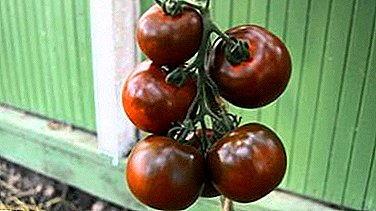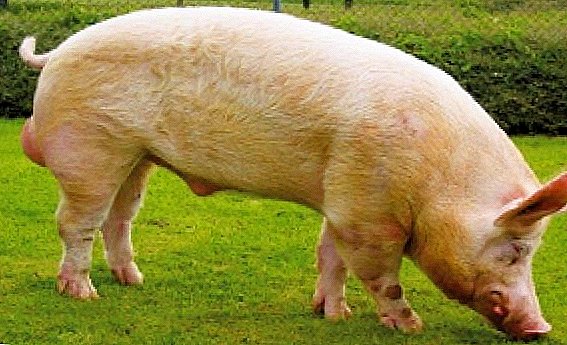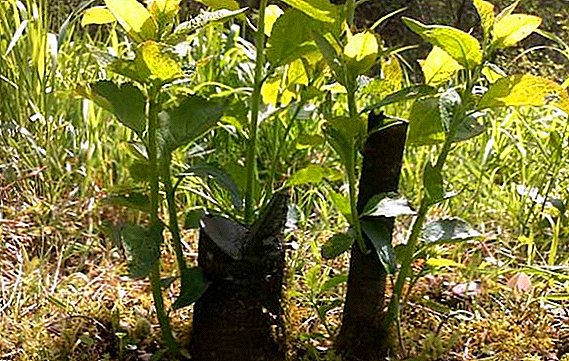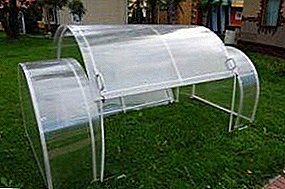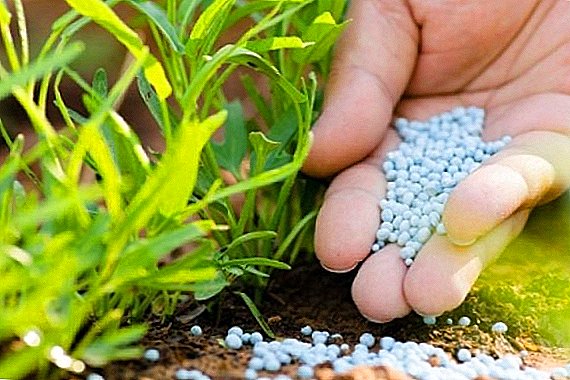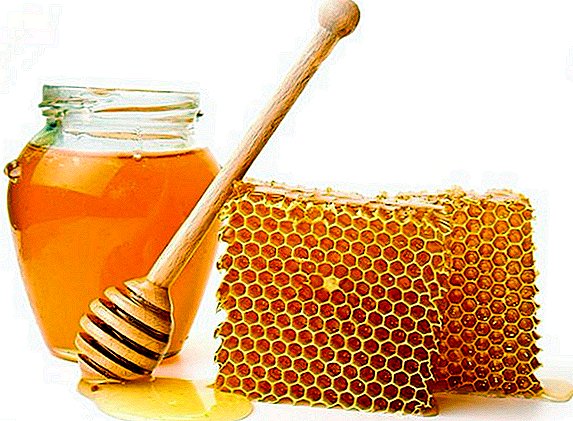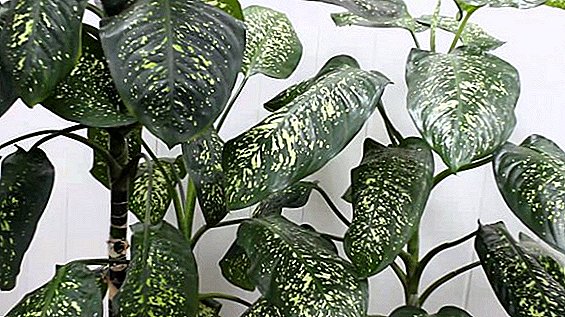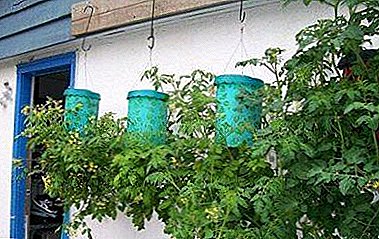
Many who are involved in gardening are constantly trying to find all sorts of ways to increase the yield of grown products and simplify the process of planting and growing crops. In this case, the cultivation of tomatoes - is no exception.
One of the original findings in this area was growing tomatoes in ordinary buckets. At first glance, this method is quite non-standard, but already quite a long period is popular, replenishing its ranks with new and new adherents.
Further we will tell whether it is possible to grow tomatoes upside down, and we will provide a photo.
Pros and cons of landing method upside down
Surely to resort to one or another method of planting and growing plants, you need to weigh all the pros and cons, what is more - minuses or pluses in this difficult experiment.
Pros:
- Tomatoes are much less susceptible to attacks of various kinds of underground pests, in particular, such a pest as a bearfish.
- There is an opportunity now to grow plants every year on the so-called "renewed" soil (as you know, this is an excellent prevention of fungal diseases and phytophtoras).
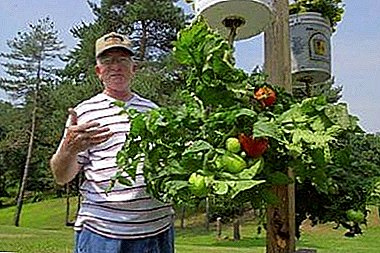 There is a noticeable increase in total crop yields (this is facilitated by the fact that the soil and water in the buckets warm up much faster, therefore, the plant grows and becomes stronger at a rapid pace).
There is a noticeable increase in total crop yields (this is facilitated by the fact that the soil and water in the buckets warm up much faster, therefore, the plant grows and becomes stronger at a rapid pace).- Reduction in time to harvest.
- Favorable operation of fertilizers (compost and humus) in the preparation of earthen mixtures due to a significant reduction in their required volume.
- Tomatoes in such containers as buckets occupy much less space, which makes life easier for gardeners and the opportunity to plant more crops, and you can also move the buckets as you like.
- Such a harmful factor as weeds disappears.
- Fertilizers to improve fertility completely fall to the roots.
- Reduced risk of expanding infections.
- Ripening tomatoes occurs in buckets two to three weeks earlier.
- When watering the water goes directly to the root system of plants, and does not spread over the surface of the soil.
- Buckets during periods of protracted showers can be placed under the roof or moved to other insulated areas.
Reference. Growing upside-down tomatoes is an extraordinary way of growing and decorating your own plot, and they do not need constant garter and any other special courting.
This method of landing has disadvantages namely:
- Increased complexity: you need to spend a lot of effort, patience and hard work for this method of growing tomatoes.
- The use of a large number of buckets (tanks) without a bottom.
- Not all varieties of tomatoes can be grown in buckets, but only hybrids and varieties with weak foliage and dense root system (this includes many types of balcony tomatoes).
- The watering process needs to be done much more often than for tomatoes planted in open ground, because the roots in the buckets do not have access to the open ground.
- You need to pay special attention to watering, otherwise tomatoes can easily die. They should be watered carefully, evenly distributing the amount of moisture supplied to the entire depth of the soil and at the same time, not pouring much, because tomatoes can disappear due to lack of oxygen.
- You also need to pay attention to the temperature, but only if the buckets for cultivation were chosen black, dark brown or dark green. To the rhizomes do not overheat in the heat, the buckets must be wrapped with light material, constantly shading and sprayed with cold water.
Training
Capacities
When preparing materials for planting tomatoes, first of all you should pay attention to:
- Color buckets. It is better that they are light colors, but if there are none, then the dark buckets should be wrapped with light (white) material so that the rhizomes do not overheat.
- Bucket material it is not important at all, they can be made of plastic or metal.
- Volume Buckets need to take a volume of at least 10 liters.
- Quality. The more useless and second-hand the bucket looks, the better. Numerous cracks, splittings and holes improve the evaporation of excess water and ventilate the root system in tomatoes. In the case of the application of new buckets, it is necessary to make a large number of breaks and holes in the bottom and along their edges.
Seed
Tomato seeds need to thoroughly bust to select the largest and intact before sowing in buckets. It is possible to buy seeds in a special store or to pre-stock them yourself. To this end, since the fall it is necessary to leave several of the largest and ripened tomatoes. Last year's seeds are best suited for growing seedlings.
In the case of the use of purchased seeds, it is necessary to follow the expiration date. The seedling will germinate much better if the seeds are with the shortest shelf life.
Self-prepared seeds should be carefully warmed with a lamp and treated with a solution of potassium permanganate. Purchased seeds are most often already treated with such a special solution.
You can learn more about preparing tomato seeds for planting here.
Other material
In order to increase the yield of tomatoes, it is best to prepare in advance a special soil for tomatoes. before landing.
- From autumn you need to fill buckets with humus. To create the humus we need:
- ordinary land from the garden (it is best to take from cucumber beds);
- ash.
- Then you need to mix the above components together and place in buckets. It will not be superfluous to add special substances so that the processes in the soil take place more intensively.
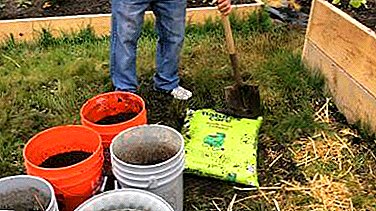 The resulting mixture should be poured with water and left for the whole winter right in buckets in the greenhouse.
The resulting mixture should be poured with water and left for the whole winter right in buckets in the greenhouse.- They can be placed in any convenient way or dug into the ground to a depth of about 20 centimeters.
- Always need to pour snow into buckets so that the earth is completely soaked. When the snow melts in spring, the soil is saturated with melt water.
- As for the soil, it is also possible to pour expanded clay into buckets or cover it with small pieces of old planks, so that there is always air access to the root system of tomatoes. Next you need to start putting:
- the first layer in the form of residues of hay, grass, food residues;
- a second layer of sand with the addition of two glasses of ash;
- top layer - garden soil.
- It is necessary to pour the earth with abundantly warm water. You can also use the process of slaking lime, which will lead to its strong heating and pour boiling water. Such a warming of the land will allow planting seedlings and harvest much better and earlier in time.
- After a few days, you need to plant two or three plants in one bucket with a volume of about ten liters.
Reference! Fertilizing can only be a single fertilizer fertilizer before the flowering of tomatoes. You can also resort to this type of fertilizer, as magnesium sulfate. It should be made in early spring with the beginning of snow melting or right into the hole when planting, approximately one tablespoon per bucket of earth.
How to grow upside down: step by step instructions
- For growing tomatoes in this way it is best to float plastic buckets with a volume of about 20 liters with a handle.
- The bottom of the plastic bucket must be drilled to get a hole about 8 cm in diameter and put it on two supports to make it easier to reach the bottom.
- Along the walls of the tank you need to lay out a special soil with fertilizers. The lower part of the plant must be gently pulled through the hole, and the outside should be left with a stalk about 4-5 cm. Thus, the agriculture will lock.
- Then you need to gradually fill the bucket with soil, and the substrate should be properly compacted, sprinkling the plant root to about 5-6 cm.
- Next you need to add the next layer of compost.
- The bucket should again be sprinkled with soil so that the level of the substrate is lower by several centimeters at the edges of the container.
- After that, the bucket must be hung in the place where it will be permanently located.
- It is necessary to pour the substrate so abundantly that the water comes out of all the holes in the bottom of the bucket. If, after watering, the ground has subsided a bit, then this is quite normal.
The bucket can be covered with a lid, but not tightly so that there is no excessive evaporation. Before watering the cover should be removed.
A photo
Here you can see photos of tomatoes upside down in buckets:





How to care for tomatoes?
- Tomatoes need to be fed several times throughout the season.
- It should be ventilated high quality greenhouse, but the temperature should not exceed 30 degrees Celsius.
- It is necessary to weed and thin out the plants in time to avoid thickening.
- It is necessary to carefully produce watering at the very root of the tomatoes, not falling on the plant itself.
- Young tomato bushes need to be watered into the bucket itself, and already stronger plants should be poured top dressing and water both into the bucket and under the bucket (if buckets are dug in).
- Top dressing should be done three times per season.
What result should be expected?
When growing tomatoes in buckets, fruits ripen a couple of weeks earlier than with the normal method. Tomatoes of any varieties grown in buckets grow large and weigh up to 1 kilogram.
Fruits do not crack, and their flesh is more dense than those that grow in open ground or in a greenhouse. In terms of the number of fruits, these tomatoes are far superior to their “brethren” growing in open beds.
Common mistakes when landing upside down
- Care errors The soil may overheat in buckets in too hot a period due to excessively rapid evaporation of moisture. And when growing, many gardeners make improper watering, which can lead to the death of tomatoes in buckets. Tomatoes in buckets need more frequent and regular watering than those grown in open ground.
- Excessive nitrogen fertilizer. It is necessary to ensure that tomatoes in time received magnesium. When magnesium fasting is carried out feeding magnesium sulfate (0.5%).
- Insufficient disease prevention. First of all, it is necessary to prevent the occurrence of diseases in tomatoes, and not to treat plants for diseases. No need to wait for symptoms of damage and various injuries.
- The depth of planting tomato seeds. In the case of planting seeds in buckets too deep, they can not climb at all.
When growing tomatoes in buckets, gardeners get excellent yields. Everyone has the right to decide to use traditional methods or innovative technologies.
And from this video you can learn about possible errors and solving problems:


 There is a noticeable increase in total crop yields (this is facilitated by the fact that the soil and water in the buckets warm up much faster, therefore, the plant grows and becomes stronger at a rapid pace).
There is a noticeable increase in total crop yields (this is facilitated by the fact that the soil and water in the buckets warm up much faster, therefore, the plant grows and becomes stronger at a rapid pace). The resulting mixture should be poured with water and left for the whole winter right in buckets in the greenhouse.
The resulting mixture should be poured with water and left for the whole winter right in buckets in the greenhouse.